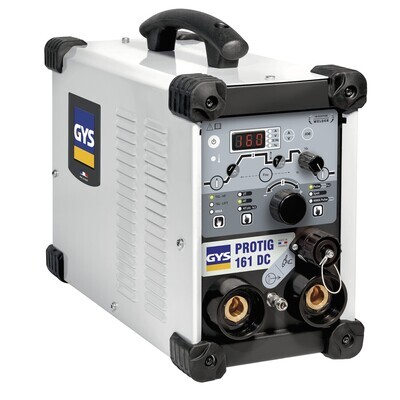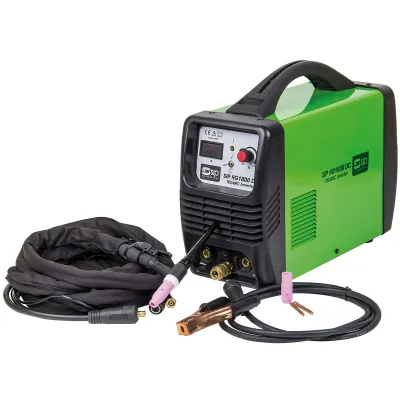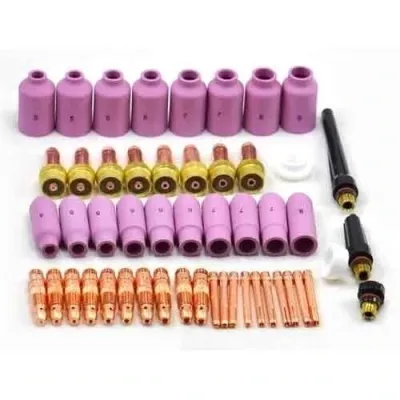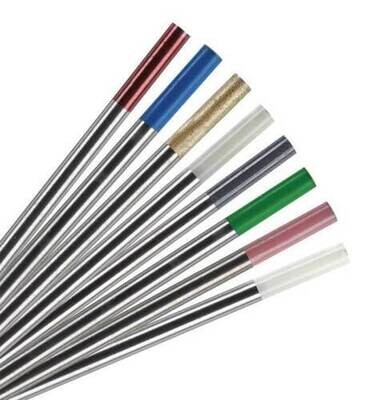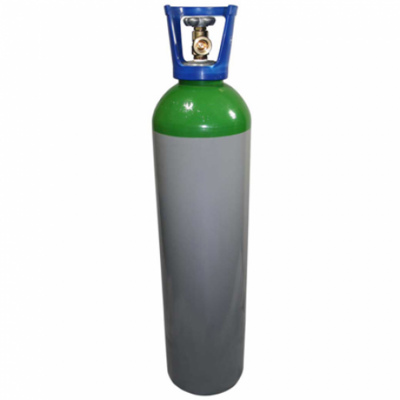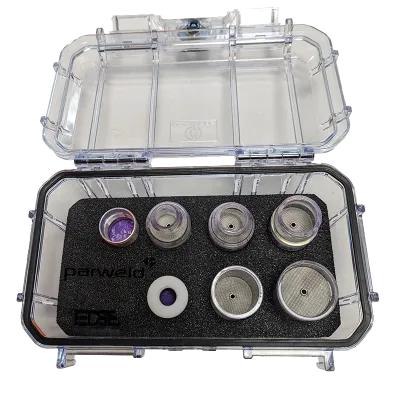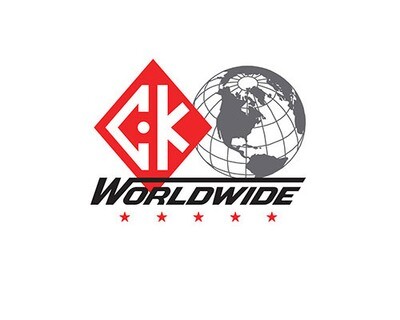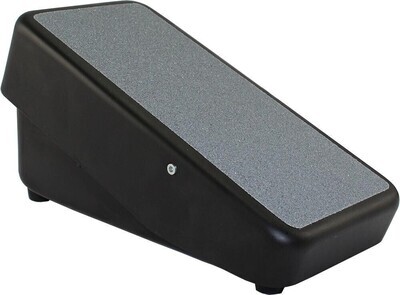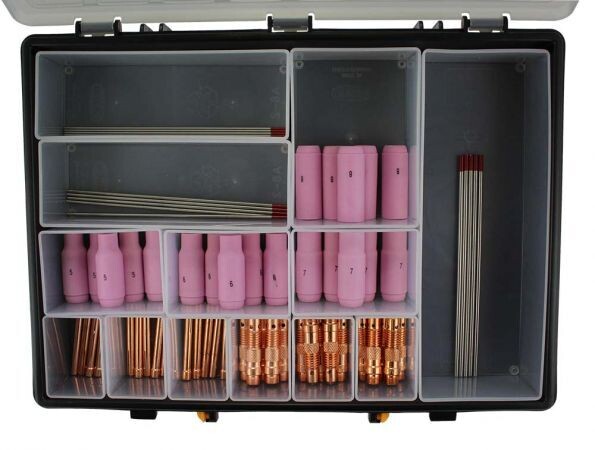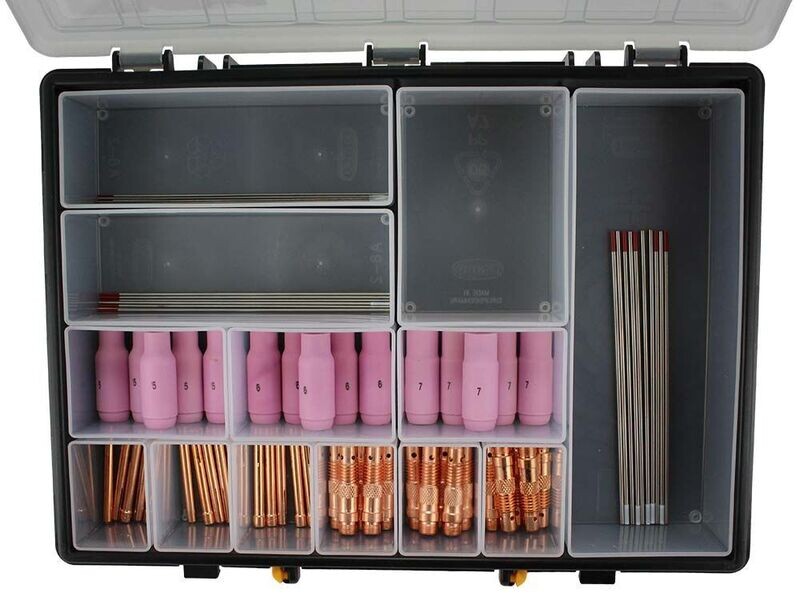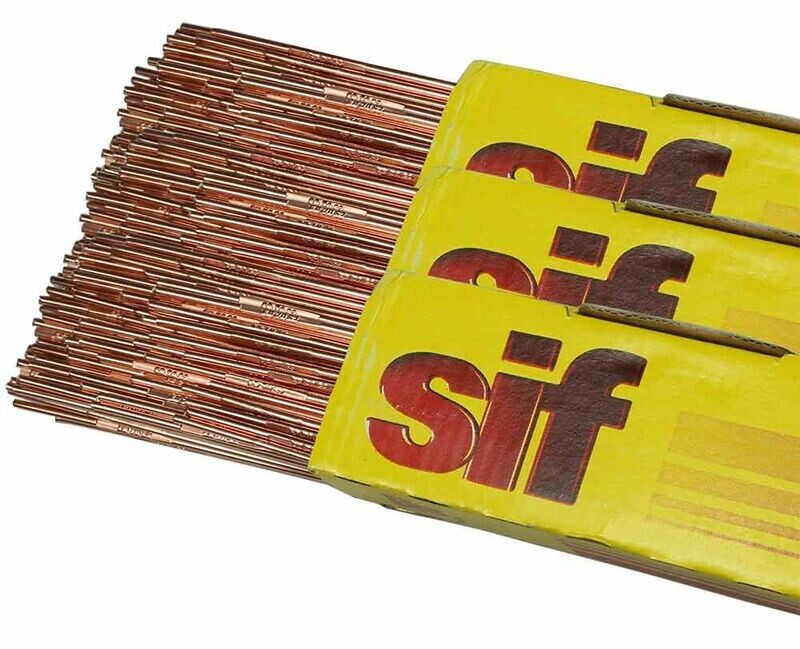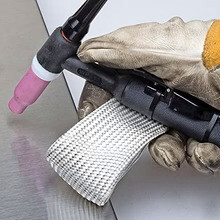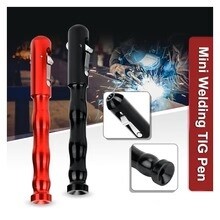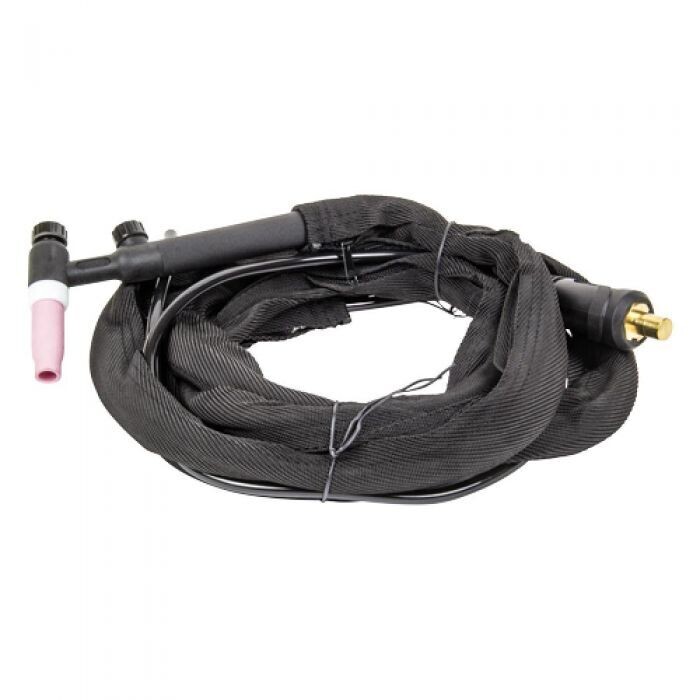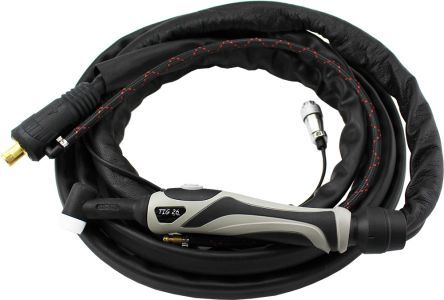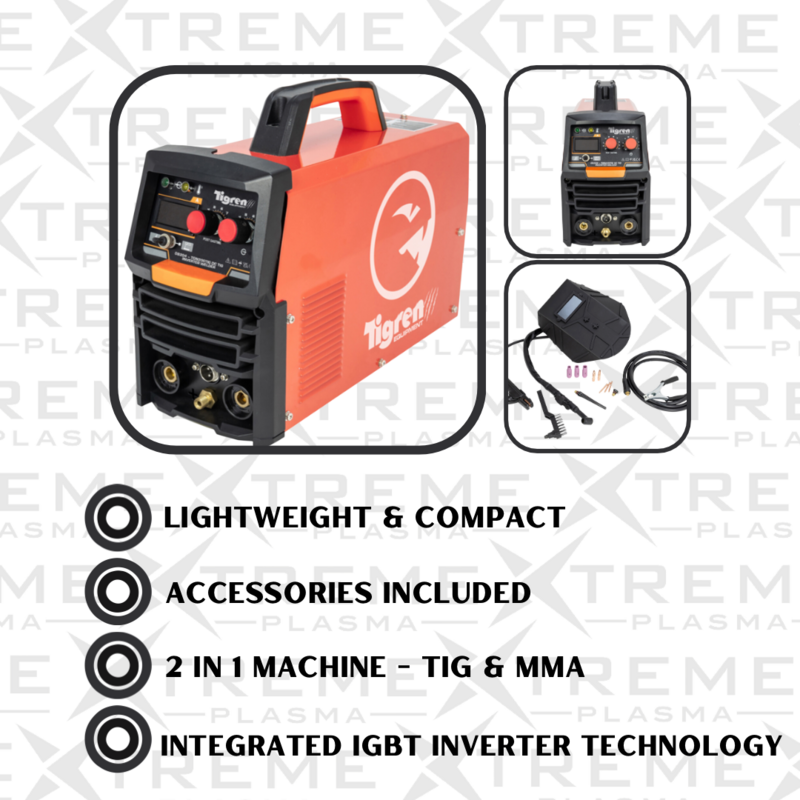Trade Counter Open Monday to Friday, 8.30am-5pm
TIG Welders & Supplies
TIG Welders & Supplies: A Complete Guide
TIG (Tungsten Inert Gas) welding, also called Gas Tungsten Arc Welding (GTAW), is one of the most precise and clean welding methods available today.
Known for its control, quality, and neat finish, this method is popular with professionals and hobbyists alike.
TIG welders are used in a wide range of industries and are trusted for tasks that require strong, attractive, and clean welds.
How TIG Welders Work
TIG welders use a non-consumable tungsten electrode to create an arc with the base metal.
This arc generates the heat needed to melt the metal and create the weld.
The weld area is protected by a flow of inert gas, usually argon, which shields it from contamination in the air.
Unlike some other welding processes, TIG welding often requires the welder to manually add filler metal to the weld pool.
This allows greater control over the weld and helps achieve clean, detailed results.
Because of this process, TIG welders are ideal for jobs where accuracy is vital.
Why TIG Welders Offer Superior Control
One of the biggest advantages of TIG welders is their ability to offer unmatched control during the welding process.
The welder can manage the current level using a foot pedal or fingertip control, making it easier to adjust the heat while working.
This means you can work on very thin or delicate metals without burning through the material.
Thanks to this control, TIG welders are often the first choice for tasks that demand high levels of detail and precision.
The arc is stable and narrow, allowing for exact weld placement even in small or tight spaces.
High-Quality Results Every Time
TIG welders produce clean, high-quality welds with a smooth and polished finish.
The precise heat control helps avoid excessive spatter, making post-weld cleanup much easier.
Because you can manually add filler metal, there’s greater control over the shape and strength of the weld bead.
Welds done with TIG welders are often admired for both their strength and appearance.
This makes them ideal for tasks where both structure and look matter - such as automotive panels, bike frames, and artistic metalwork.
Suitable for Many Materials
TIG welders can be used with a wide variety of metals.
This includes common materials like stainless steel and carbon steel, but also aluminium, copper, magnesium, and special alloys.
TIG welding works well on both thin and thick materials, giving it a level of flexibility that many other welding processes can’t match.
Because of this, TIG welders are used in many industries.
You’ll find them in aerospace, automotive, food production, shipbuilding, and even in delicate art and jewellery creation.
They’re especially useful for joining materials that need a clean, precise bond.
No Flux, No Spatter
Unlike stick welding or MIG welders, TIG welders don’t require any flux.
Instead, the inert gas shield keeps the weld clean and free from contaminants.
This results in a much neater welding process, with almost no spatter or residue left behind.
This also means less time spent cleaning up after welding.
The cleaner process makes TIG welders a preferred option for industries with high cleanliness standards, such as medical equipment and food processing machinery.
Effective in All Positions
Another great feature of TIG welders is their ability to work in all welding positions.
Whether the job requires flat, horizontal, vertical, or even overhead welding, TIG welders can deliver stable and consistent welds.
This makes TIG welders ideal for complex or awkward jobs, including pipe welding or working on hard-to-reach areas.
The welder’s ability to control every aspect of the process makes it easier to adjust for position, angle, and material type.
Perfect for Many Different Industries
TIG welders are often chosen for the most critical and high-stakes welding jobs.
In fields like aerospace, nuclear energy, and pharmaceuticals, weld quality can’t be compromised.
Here, even a small defect could result in failure.
Because TIG welders offer such fine control, they’re ideal for welding thin tubes, pressure vessels, or any component where heat management and accuracy are vital.
The lack of contamination also ensures a purer weld, which is key in applications involving liquids, gases, or sterile environments.
A Trusted Choice for Professionals
For welders seeking the highest quality results, TIG welders continue to stand out.
Whether used in art, construction, transport, or high-tech engineering, they offer a balance of control, strength, and visual appeal.
Although TIG welders may take more time and skill to operate, the result is often well worth the effort.
Clean lines, minimal distortion, and long-lasting welds make them a smart investment for anyone serious about welding.
From home garages to advanced industrial settings, TIG welders prove their value every day.
Their flexibility and quality make them one of the best tools for anyone working with metal.
Some of the Best TIG Welders
When looking for reliable TIG welders, several brands stand out for their performance and value.
These welders are highly regarded for their quality, performance, and durability, making them great choices for anyone looking to invest in a top-notch TIG welding machine.
Here are a few top options:
Parweld XTM 211Di
The Parweld XTM 211Di is a versatile and compact TIG welder.
With its advanced inverter technology, it offers precise control and stable arcs for welding various materials.
Its lightweight design makes it ideal for both workshop and mobile applications, offering excellent value for both professionals and hobbyists.
GYS PROTIG 161 DC
The GYS PROTIG 161 DC is a powerful, user-friendly TIG welder perfect for welding steel and stainless steel.
It offers a precise arc, great weld quality, and the ability to handle thin and thick materials alike.
With a robust design and digital control settings, it's a reliable choice for both novice and experienced welders.
SIP PRO 200A AC/DC
The SIP PRO 200A AC/DC is a versatile TIG welder that allows for both AC and DC welding.
This makes it suitable for welding a wide range of metals, including aluminium, steel, and stainless steel.
With excellent arc stability and adjustable settings, it's perfect for professionals looking for reliable performance in various welding environments.
Refine by
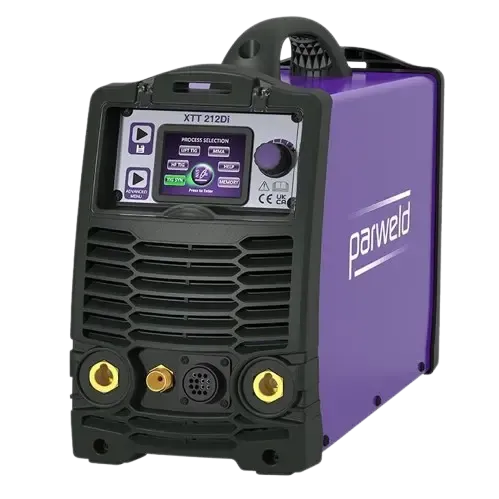
PARWELD XTT 212Di AC/DC Pulsed Tig 200A
PARWELD XTT 212Di AC/DC Pulsed Tig 200A
synergic TIG £750 +vat Free UK Delivery
£889.00
Display prices in:GBP

